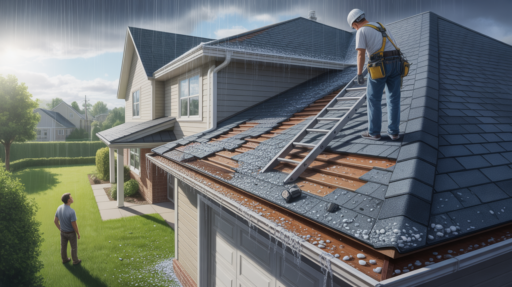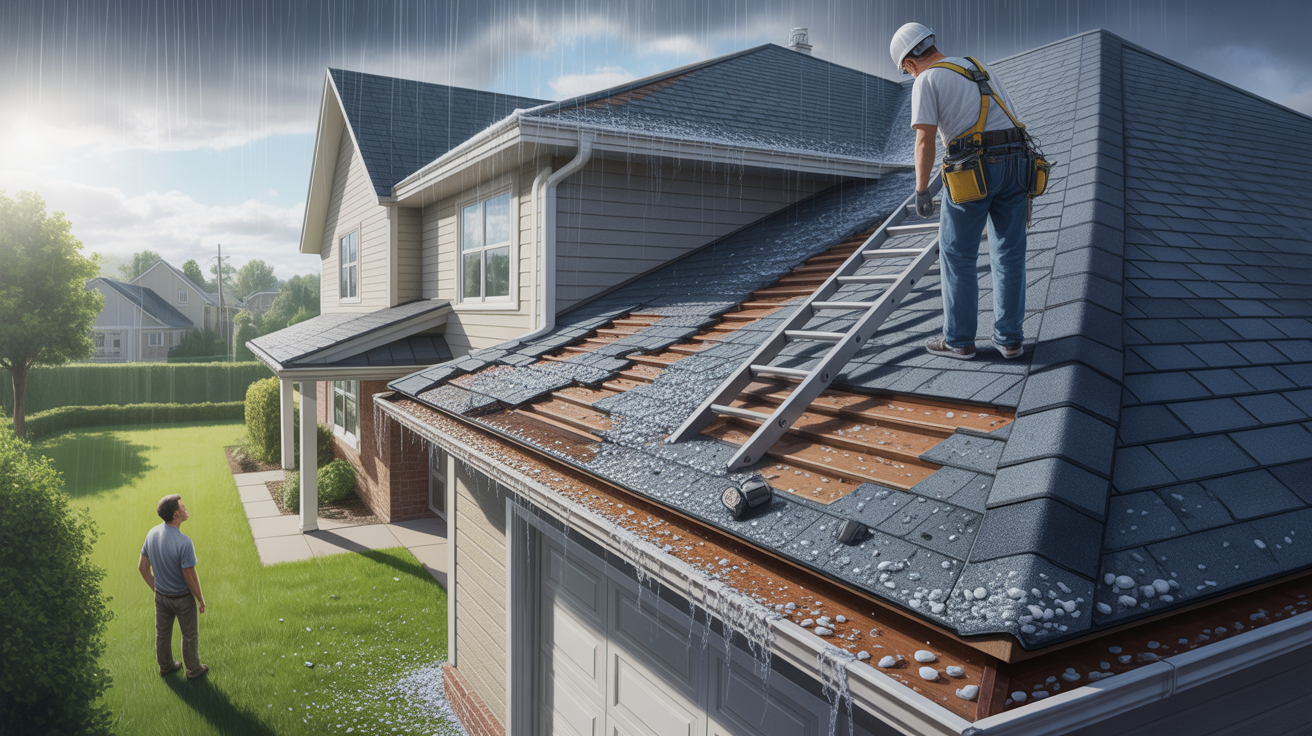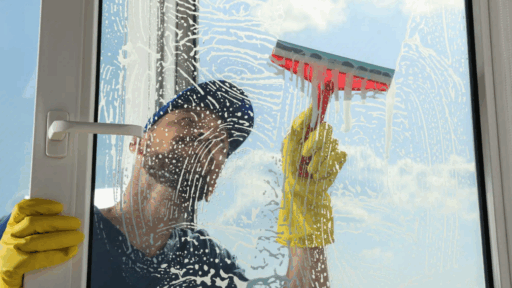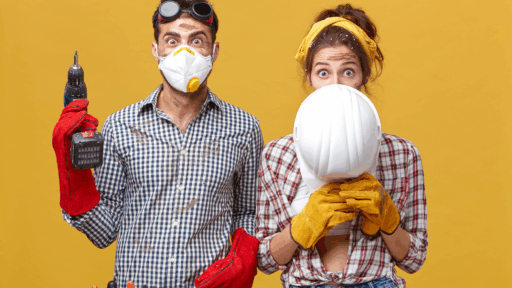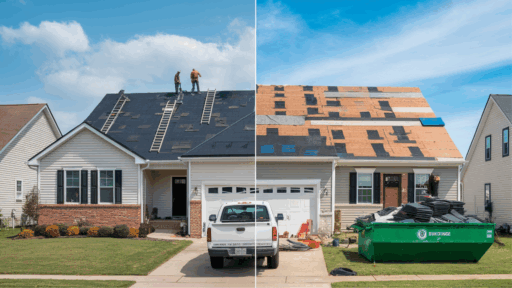Just had a hailstorm roll through your area? You might be wondering if your roof took a hit-and that’s a smart question to ask.
Hail can cause damage that’s hard to see but can lead to big problems later on, like leaks, mold, or even a full roof replacement.
The good news is, you don’t need to be a roofing expert to spot the signs.
I’ll walk you through what hail damage looks like, how to check for it safely, and what steps to take if your roof needs help. You’ll also learn when it’s time to call a professional and how to work with your insurance if needed.
This guide is here to give you peace of mind and help you take quick action. I’ve gathered simple, trustworthy tips so you can protect your home and avoid bigger issues down the road.
Let’s take the guesswork out of it – by the end of this, you’ll know exactly what to look for and what to do next.
What Hail Does to Your Roof
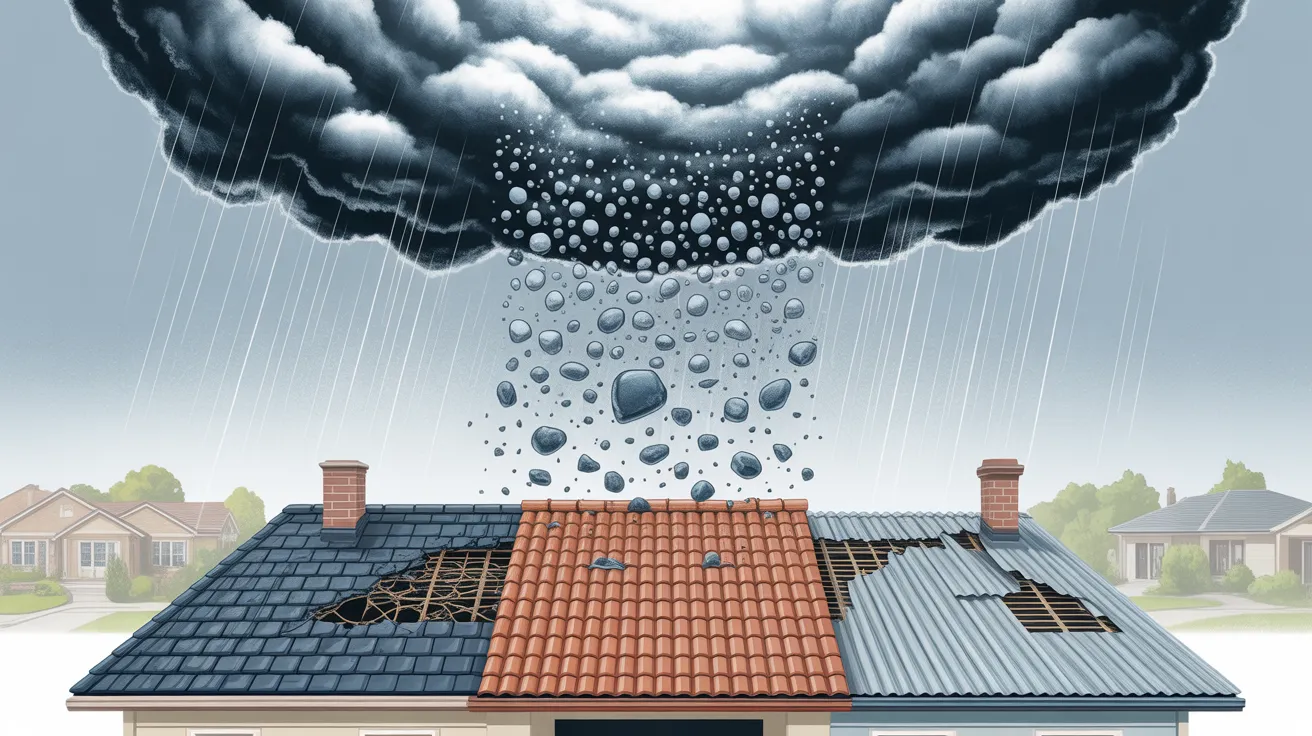
Hail is frozen rain that forms in strong thunderstorms. It starts as little ice balls high in the clouds.
As the wind blows these ice balls around, they pick up more layers of ice and grow larger. When they get heavy enough, they fall to the ground- and sometimes, right onto your roof.
When hail hits your roof, it can cause dents, cracks, or even holes. The damage depends on how big the hail is and how hard it hits. Small hail might not leave a mark, but big hail can tear shingles, loosen tiles, or dent metal roofing.
Shingle roofs are the most likely to get damaged, especially if they’re older. Metal roofs can get dents, and tile roofs might crack or break.
Even if you don’t see damage right away, small hits can still weaken your roof over time. That’s why it’s important to check after a storm.
Signs Your Roof Has Hail Damage
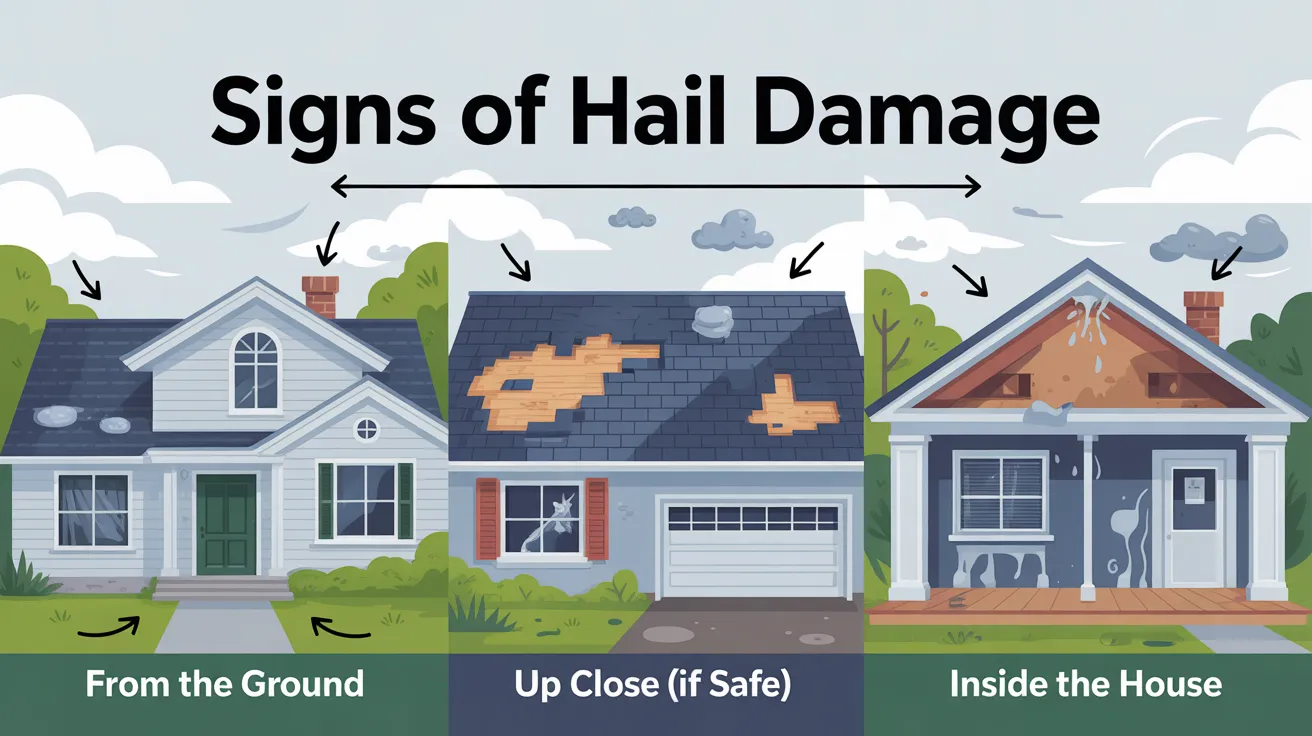
After a hailstorm, it might be hard to tell if your roof is damaged, especially from the ground. But spotting signs early can help you fix problems before they get worse. Even if your roof looks fine from far away, damage could still be hiding.
1. From the Ground
After a storm, the first place to look is around your home. You don’t need to get on the roof right away—just walk around your house and check for signs of impact.
- Dents in gutters or downspouts: Hail can leave small dings or dents in your gutters, especially if they’re aluminum. These dents are a good clue that your roof might also be damaged.
- Damaged siding or cracked windows: Look for chips, cracks, or holes in your siding. Broken or chipped windows and torn window screens are also signs of heavy hail.
- Splatter marks or chipped paint on walls: You might notice spots where the paint has chipped off or looks splattered—these are caused by hail hitting the wall surface hard.
2. Up Close (If Safe)
If you’re comfortable and it’s safe to do so, take a closer look at the roof. A ladder can help you see more detail, but don’t climb onto the roof unless you’re confident in doing so safely.
- Broken or missing shingles: Hail can break, lift, or completely knock off shingles. Gaps or loose pieces are a clear sign of trouble.
- Soft spots or bruises on shingles: Gently press the surface of the shingles. If you feel soft areas or see spots that look darker, those may be bruises caused by hail impacts.
- Missing granules on shingles: Look for bald patches or black spots on asphalt shingles—these are places where granules have been knocked off by hail.
- Cracks or holes in roof tiles or metal panels: Clay, slate, or metal roofing may crack or dent under hail impact. These cracks can lead to leaks if not repaired.
3. Inside the House
Sometimes, the first signs of roof damage show up inside your home. Check for these warning signs that water might be getting in.
- Water stains on ceilings or walls: Look for yellow, brown, or gray spots—especially after a storm. These could mean water is leaking through damaged roofing.
- Leaks or wet spots in the attic: Go into your attic with a flashlight and check for wet wood, puddles, or dripping. These are clear signs your roof may be compromised.
- Peeling paint or bubbling drywall near the ceiling: If paint is peeling or drywall is bubbling, especially in the corners of rooms, it could be from water leaking through the roof after hail damage.
What to Do If You Spot Hail Damage
If you see signs of hail damage on your roof, don’t panic- but don’t wait too long either. Catching the damage early can help stop small problems from turning into big, expensive ones.
Start by taking pictures of anything you notice, like dents, broken shingles, or water spots. These will help if you need to file an insurance claim.
Next, call a trusted roofing professional to do a full inspection. They can safely check areas you might not be able to see and tell you how bad the damage is.
It’s important to use someone who’s licensed and experienced so you get honest advice. Even if the damage looks small, it can still lead to leaks and other problems later.
Getting it looked at right away keeps your home safe and gives you peace of mind. A strong roof protects everything under it-so don’t ignore the signs!
When to Repair vs Replace Your Roof

After a hailstorm, I often wonder whether a simple repair is enough or if it’s time to replace the entire roof. It can be hard to know just by looking, so I rely on a few key signs to guide my decision.
| Repair | Replacement |
|---|---|
| A few missing or damaged shingles | Many broken or missing shingles across large areas |
| Minor dents or surface damage only | Soft spots, sagging, or structural issues |
| No visible leaks inside the home | Water stains, leaks, or mold indoors |
| Roof is newer and in otherwise good shape | Roof is older or past its expected lifespan |
| Quick, low-cost fix is possible | Repair costs are high or won’t last long |
I always contact a licensed and well-reviewed roofing contractor to inspect the damage. They explain what’s going on, what my options are, and help me make the best decision for my home and budget.
Tips to Protect Your Roof From Hail in the Future
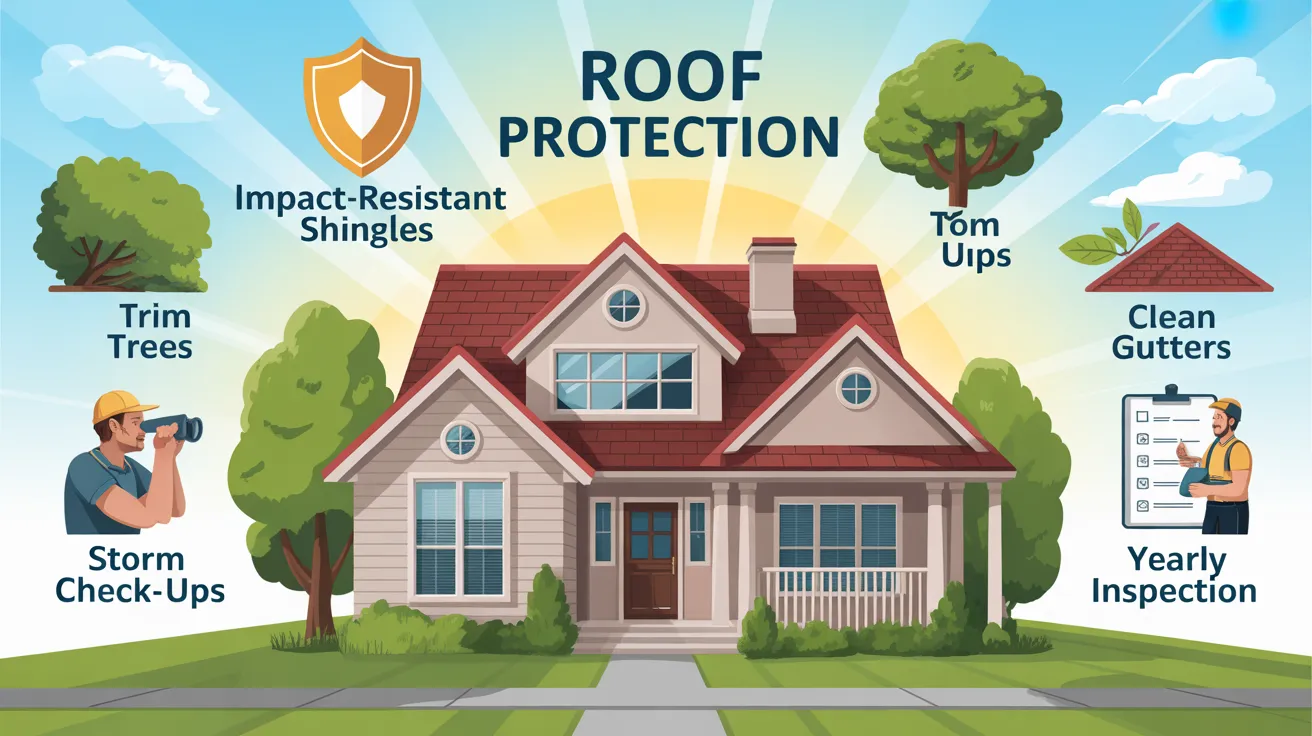
- Use impact-resistant shingles: These shingles are stronger and built to stand up to hail. They can help reduce the damage and save you from big repairs.
- Trim trees near the roof: Cut back any branches that hang over your roof. This keeps them from falling and breaking shingles during a storm.
- Regular check-ups after storms: After a hailstorm, look around your yard and up at the roof (from the ground) for signs of damage. If you see anything strange, get a roofer to check it.
- Clean out gutters often: Blocked gutters can cause water to back up and damage your roof edges. Keep them clear so water can flow away properly.
- Schedule yearly roof inspections: Have a roofing professional check your roof at least once a year. They can spot small problems before they turn into big ones.
Conclusion
Hail damage might not always look serious at first, but it can lead to bigger problems if ignored.
Cracked shingles, soft spots, or even small leaks can affect your roof’s ability to protect your home. That’s why it’s important to check for signs of damage after every major storm, even if things look fine from the ground.
If you’re not sure what you’re seeing, a trusted roofing contractor can give you a clear answer. They’ll inspect the roof, explain what needs to be done, and help you decide whether a repair or replacement makes the most sense.
Taking action early can save money, prevent further damage, and keep your home safe and comfortable. Don’t wait until the problem grows – stay ahead of it and keep your roof in top shape.
When it comes to hail damage, being proactive always pays off.
Curious about how much a roof inspection might cost? Take a look at Roof Inspections: Cost and Average Inspection Expenses to understand what to expect and how to plan your budget.
Frequently Asked Questions
Will my insurance cover hail damage?
Most homeowners’ insurance covers hail damage, but double-check your policy. Talk to your agent so you’re clear on what’s included and how to file a claim.
What if I don’t see leaks? Should I still worry?
Yes. Damage isn’t always visible right away. Even without leaks, shingles or tiles might be weakened, leading to future problems. It’s smart to get your roof checked.
How often should I check my roof after a storm?
Every time a big storm hits, do a ground-level check. Look for missing shingles or dents. If anything looks off, call a professional for a closer inspection.

